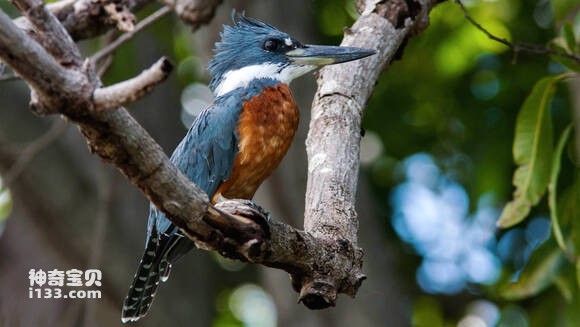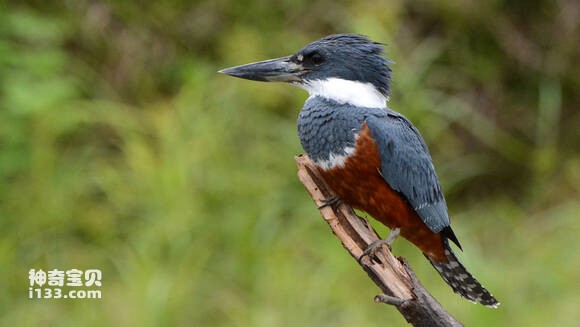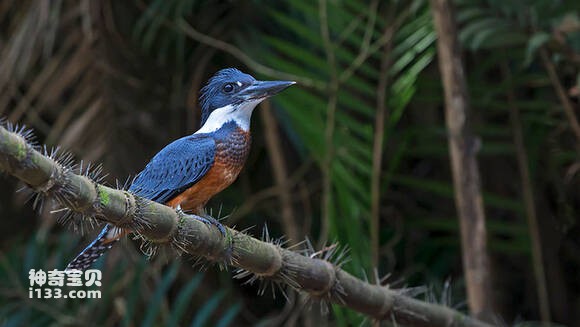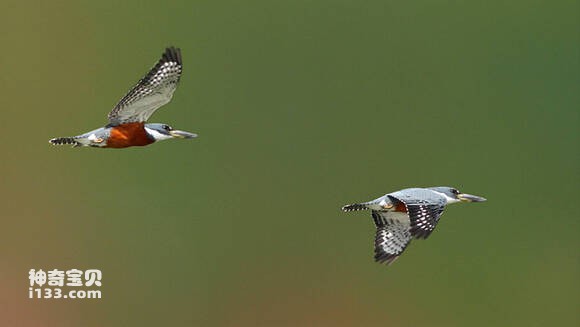Ceryle torquata
IUCN
LCBasic Information
Scientific classification
- name:Ceryle torquata
- Scientific Name:Ceryle torquata,Megaceryle torquata,Ringed Kingfisher
- Outline:Climbing birds
- Family:
Vital signs
- length:38-42cm
- Weight:305-341g
- lifetime:No textual research information is available
Feature
Distribution and Habitat
The brown-bellied dog is found in Central America (between North and South America, Including Guatemala, Belize, Honduras, El Salvador, Nicaragua, Costa Rica, Panama, Bahamas, Cuba, Haiti, Jamaica, Dominica, Antigua and Barbuda, Saint Vincent and the Grenadines, Saint Lucia, Barbados, Grenada, Trinidad and Tobago, etc.), South America (including Colombia, Venezuela, Guyana, Suriname, Ecuador, Peru, Bolivia, Paraguay, Brazil, Chile, Argentina, Uruguay, and the Malvinas Islands (also known as the Falkland Islands).
Brown bellied fish dogs are commonly found along rivers in coastal and inland areas. They are found in the region's mangroves, rice paddies and on the edge of cities. It spends most of its time on dead trees, rocks, rivers and streams 5 to 10 meters above the water. Sometimes perch on a telephone pole and hunt for food.
Appearance
The brown Bellies are 38-42 cm long and weigh 305-341 g. Main plumage blue. The crest of the crown raised a small spike. The powerful mouth is 8 inches long. Grey predominantly blue plumage, blue-black head, necklace-like white collar. The male bird is almost completely reddish-brown from the abdomen and white from the anus. The female has a chestnut underbody with slightly less red and a wide gray band on the breast. The mouth and feet are dark brown.
Mouth thick straight, long and firm, mouth ridge round; No nasal furrow; The wingtip is long, the first primary feathers are slightly shorter, and the third and fourth feathers are longest; Tail short round; The head is large, the neck is short, the wings are short and round, and the tail is mostly short; The mouth is long and pointed, the rostrum is round and blunt, the feet are very short, the toes are thin and weak, the fourth and third toes are mostly connected, and the second toe is only connected at the base. Caudal lipid gland
Details
Ceryle torquata, Megaceryle torquata, Ringed Kingfisher, no subspecies.
The brown-bellies feed mainly on small fish, eat crustaceans and a variety of aquatic insects and their larvae, and also peck at small frogs and a few aquatic plants. Kingfishers can also maintain excellent vision after diving into the water because their eyes can quickly adjust to the contrast caused by light when they enter the water. So the fishing ability is very strong.

The brown-bellies nest mainly on earth cliffs, or in the dikes of fields and streams, using their mouths to dig tunnelled burrows, which are generally unfoiled. The eggs are laid directly on the nest ground. Each clutch lays 4-5 eggs. Egg color pure white, bright, slightly spotted, the size of about 28 mm ×18 mm, 1 ~ 2 broods per year; The incubation period is about 34 to 37 days, and both sexes feed the chicks, mainly fish.

Listed in the International Union for Conservation of Nature (IUCN) ver 3.1:2008 Red List of Birds.

Protect wild animals and eliminate wild meat.
Maintaining ecological balance is everyone's responsibility!








